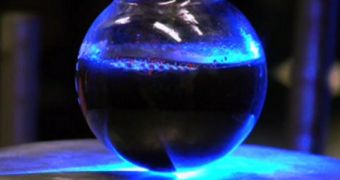A group of investigators at the US Department of Energy's (DOE) Lawrence Berkeley National Laboratory (Berkeley Lab), led by renowned chemist Heinz Frei, announces the discovery of a new series of compounds, called cobalt oxides, that have the potential to make water oxidation reactions easier and more efficient.
These reactions are an integral part of artificial photosynthesis technologies, which seek to emulate the natural process of photosynthesis, through which plants convert carbon dioxide and nutrients into oxygen and energy, in the presence of sunlight. In the future, photosynthesis will make up an important part of the world's clean energy portfolio.
With artificial photosynthesis, it will become possible to produce renewable liquid fuels, whose synthesis will no longer contribute to exacerbating the effects of global warming and climate change.
The main issue plaguing this technology is scalability. While proof-of-concept studies and processes have been developed, a way to scale them up to the commercial level has remained elusive. In the new study, Frei's group found a way to bring the goal of viable artificial photosynthesis closer to reality.
“The oxidation of water to molecular oxygen is a four-electron process involving multiple steps,” explains Frei, who is a chemist with the Physical Biosciences Division at Berkeley Lab.
“We’ve obtained the first direct, temporally resolved observation of two intermediate steps in water oxidation using an Earth-abundant solid catalyst, cobalt oxide, that allowed us to identify the kinetic bottlenecks,” the investigator goes on to say.
“With this knowledge, we can devise and design improvements on the cobalt oxide catalyst and its support environment to partially or completely remove these bottlenecks and improve the efficiency of water oxidation,” Frei adds.
In order to better understand the individual events in the four-electron cycle of water oxidation, the team used a spectroscopic technique known as rapid-scan Fourier transform infrared (FTIR) spectroscopy for their research.
Details of the investigation were published in a paper titled “Time-resolved observations of water oxidation intermediates on a cobalt oxide nanoparticle catalyst,” which appears in the latest issue of the esteemed scientific journal Nature Chemistry. The work was supported by the DOE Office of Science.
Frei explains that artificial photosynthetic systems oxidate water molecules in order to obtain electrons, oxygen, and hydrogen ions called protons. These can be used to create liquid fuels out of abundant chemicals including carbon dioxide. A future where CO2 captured from coal-fired power plants and then used to create fuel is entirely possible.
This would have the added benefit of offsetting at least some of the yearly CO2 emissions humanity emits.

 14 DAY TRIAL //
14 DAY TRIAL //